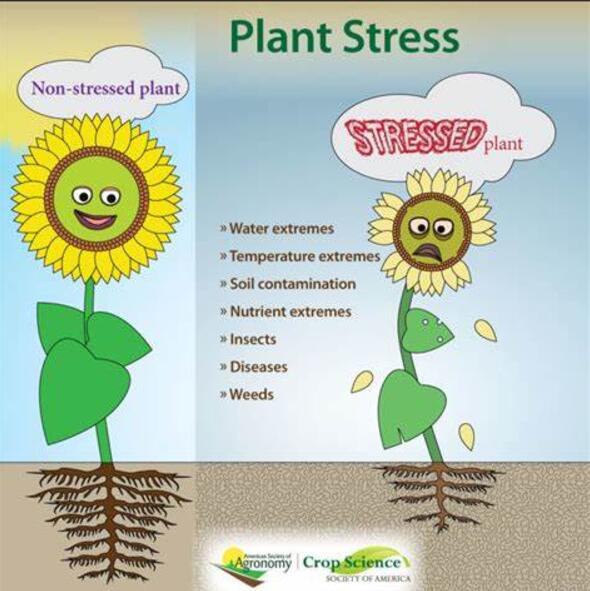Strigolactones affect the stomatal and transcriptomic memory of repeated drought stress in tomato
IF 6.8
Q1 PLANT SCIENCES
引用次数: 0
Abstract
Stress memory is an adaptive strategy for plants to cope with fluctuating environmental conditions. For example, it has been shown that the transcriptional responses to drought can be “trained”, i.e. changed, by a previous stress episode. Also, the so-called after-effect of drought is a feature of stress memory seen at the stomatal level: an incomplete recovery of conductance after drought, even when water potential has fully recovered. This effect has been shown to depend on the phytohormones abscisic acid and strigolactones, but whether and how repeated drought spells affect its intensity is unclear, as it is unclear how much of the “trainability” of physiological and molecular responses depends on strigolactones. This study investigated the contribution of strigolactones to physiological and transcriptional drought memory, by comparing the stomatal conductance and transcriptome of wild-type versus strigolactone-depleted tomato plants in repeated dehydration cycles. We found that the after-effect of drought can be primed by a previous drought episode; and, that strigolactones are indispensable for full priming. About half of the genes that display a drought memory profile require an intact strigolactone pathway for trainability. Several potential candidates are proposed as effectors of strigolactone-dependent drought memory, namely for enhanced abscisic acid sensitivity and antioxidant activities, and for the maintenance of cellular homeostasis via enhanced protein preservation under environmental duress. Our findings bear applicative implications for stress resilience improvement in crops and help to explain why plants treated with synthetic strigolactones display improved performances under a very diverse array of stresses.
求助全文
约1分钟内获得全文
求助全文
来源期刊

Plant Stress
PLANT SCIENCES-
CiteScore
5.20
自引率
8.00%
发文量
76
审稿时长
63 days
期刊介绍:
The journal Plant Stress deals with plant (or other photoautotrophs, such as algae, cyanobacteria and lichens) responses to abiotic and biotic stress factors that can result in limited growth and productivity. Such responses can be analyzed and described at a physiological, biochemical and molecular level. Experimental approaches/technologies aiming to improve growth and productivity with a potential for downstream validation under stress conditions will also be considered. Both fundamental and applied research manuscripts are welcome, provided that clear mechanistic hypotheses are made and descriptive approaches are avoided. In addition, high-quality review articles will also be considered, provided they follow a critical approach and stimulate thought for future research avenues.
Plant Stress welcomes high-quality manuscripts related (but not limited) to interactions between plants and:
Lack of water (drought) and excess (flooding),
Salinity stress,
Elevated temperature and/or low temperature (chilling and freezing),
Hypoxia and/or anoxia,
Mineral nutrient excess and/or deficiency,
Heavy metals and/or metalloids,
Plant priming (chemical, biological, physiological, nanomaterial, biostimulant) approaches for improved stress protection,
Viral, phytoplasma, bacterial and fungal plant-pathogen interactions.
The journal welcomes basic and applied research articles, as well as review articles and short communications. All submitted manuscripts will be subject to a thorough peer-reviewing process.
 求助内容:
求助内容: 应助结果提醒方式:
应助结果提醒方式:


